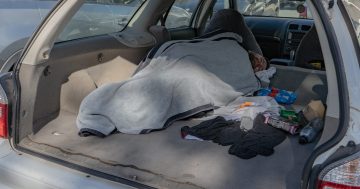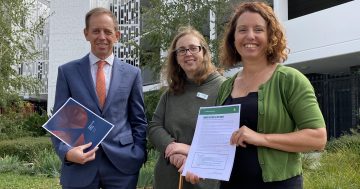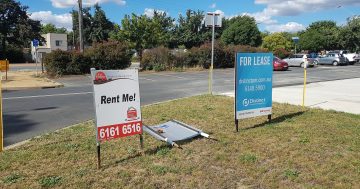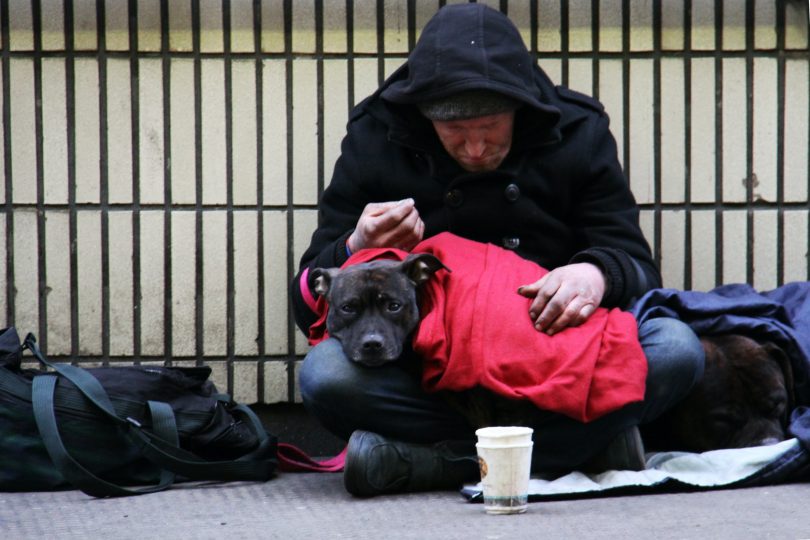
Poverty in the ACT isn’t always as obvious as this, with some people struggling out of plain sight. Photo: Nick Fewings.
We all have an idea in our heads of what it looks like. A man tucked into the alcove of a building, scraggly hair poking out from under a dishevelled beanie, enshrouded in a mix of tattered flannel, cardboard and plastic bags.
Maybe there’s also a mangy looking dog.
That’s poverty, true enough. But poverty doesn’t stop there. It could be living next door.
Anti-Poverty Week has been running since Sunday, 17 October, encouraging Australians to increase our understanding of poverty and how we might be able to take collective action to alleviate its effects.
Canberra’s poor are not always on the streets. They can be living in a house with electricity and running water, and have a car and mobile phone like Jane (surname withheld for privacy reasons) does.
To the outsider, Jane was doing ‘alright’. However, inside was a different story.
“After rent, I had $120 a fortnight to go towards food, medication, transport and trying to keep a phone and electricity on,” she says.
“Two-minute noodles with frozen veggies was about as healthy as I could eat, with a bag of groceries costing about $50 these days. You can’t get a job without a phone so I tried to prioritise that over food just to get out of the rut.”
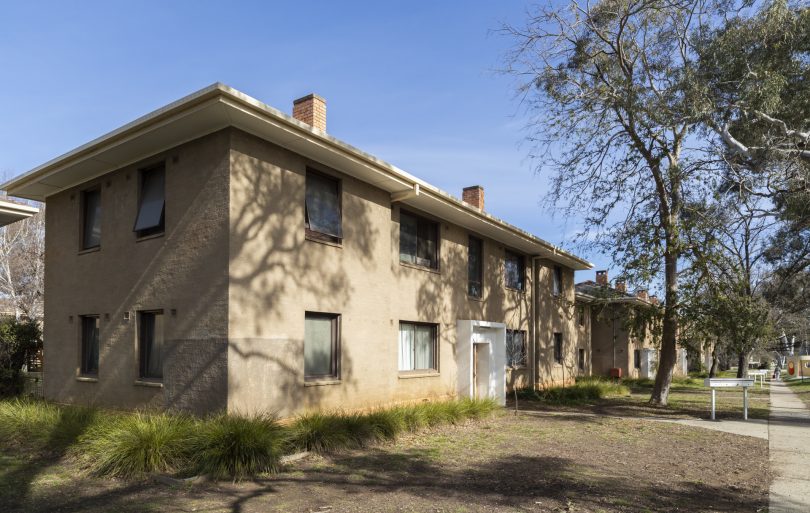
Public housing in Reid. Photo: Michelle Kroll.
Jane suffered an injury while working a casual job that earned her reasonable money. With no sick leave or other assistance coming from the company, she was left out on a limb for years.
“Some days I would just cry on the floor from the pain, but there was nothing else I could do for it,” she says. “I saved $10 a fortnight for almost a year just to see someone to find out what was wrong.”
It’s now been a few years, and Jane has since found employment. But she says she will never forget the horror of those days.
“I lived with a crippling injury for years without diagnosis because I couldn’t afford to go to specialist appointments,” she says.
Jane isn’t alone. Anyone who spends more than 30 per cent of their gross income to keep a roof over their head fits into a category known as the ‘working poor’, often overlooked but not at all rare.
Anglicare CEO Jeremy Halcrow says the organisation has people in the ACT and Queanbeyan coming to them for food rather than crisis support.
“People pay their rent first, but the consequence of that is they don’t have money left over for unexpected bills and other necessary expenses,” he says. “It’s households in that category coming to our food banks.”
ACT Shelter CEO Travis Gilbert says that for singles, couples and families raking in less than $70,000 a year, compromises are having to be made, and certainly not on luxury items.
“These people are in administration roles, in social service roles in disability and aged-care homes,” he says.
“They’re victims of family violence, they’re certainly retail and hospitality workers, post-graduates, and also, a bit surprisingly, enrolled nurses.”
A 2021 ACT Cost of Living Report was released by the ACT Council of Social Service (ACTCOSS) in August this year, tracking changes in the cost of living for low-income households in the ACT during the past 12 months, and the past five years.
It reveals the number of Canberrans living below the poverty line has increased to an estimated 38,000 during the COVID-19 pandemic, including approximately 9000 children.
Wages have remained steady for a long time and government payments such as Youth Allowance and JobSeeker haven’t seen a real increase in 25 years. All the while in the ACT, the costs of electricity, gas, health, education, housing and food have been tracking upwards for years.
Travis says that among other things, the prevalence of two-income couples and families in Canberra has made life harder for people living on one income.
He says what Canberra really needs is an increase in the supply of affordable rental properties.
“There’s a really urgent need for the ACT Government to help community housing providers by reducing the amount it charges for land, and increase the number of blocks available to those providers,” says Travis.
He says the explosion of new apartments in the ACT isn’t helping the situation.
“Investors don’t generally build houses,” says Travis. “More than 80 per cent of people who buy a property to rent out buy an apartment. Unfortunately, this means the rental stock is not really geared to families.”
You can sign the ACTCOSS petition calling for an increase to income support payments and rent assistance payments, and investment in social and affordable housing.















